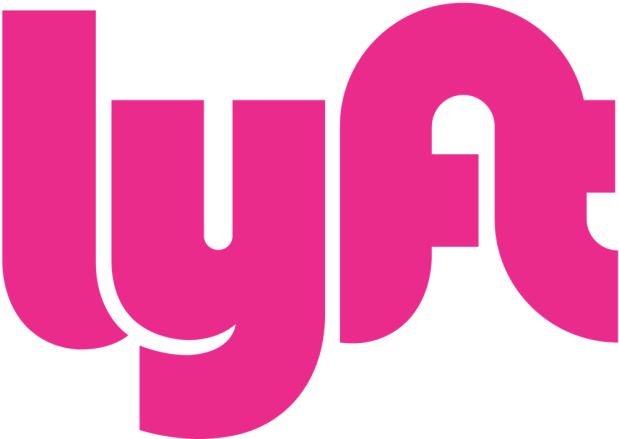Will Riding Be The New Driving?

Driving — it’s the worst, right?
You’re just trying to get from point A to point B and all of a sudden you’re in traffic, everyone’s making bad choices all around you, other people’s music is terrible, drunk people are dancing on the side of the road, you get rear-ended by a bimbo in yoga pants, shriners yell at you, zoo animals are walking everywhere and a sad clown is giving you the stink eye.
If you found that you were following, then suddenly not following, that last sentence, don’t worry, it’s not you. That traffic jam as imagined by Salvador Dali is basically the plot of the latest Lyft commercial that posits that riding is the new driving, because, frankly, driving is just terrible.
Driving, the commercial informs, is a wonderful opportunity to have a bad time, but the drivers of the world don’t have to live this way. Instead, they can call Lyft and have someone pick them up.
The fridge logic of the commercial is actually a little weird here. If driving is the worst imaginable human activity as this ad seems to argue, why is that Lyft driver so darn happy to see that passenger? Also, isn’t Lyft kind of doing something terrible to that friendly looking blonde woman who picks the sad driver up at the end of the commercial? She’s not a passenger, and sure, she’s being paid, but she still has to get out of that traffic jam. There might be a pin we can put in that one for later though …
Also problematic, the driver is still stuck in a traffic jam and is arguably still having the same terrible experience, but is now in the passenger seat. Unless Lyft is advertising that they have cars that double as teleporters a la “Star Trek,” the driver has only solved the driving in traffic problem here, not the being in traffic problem.
But of course, the ad is not meant to be taken literally, as giraffes almost never feature into traffic jams in reality. No, the ad tells a story and is meant to evoke some very specific feelings for some very specific consumers who watch it.
“Riding is the new driving,” Lyft Executive Creative Director Jesse McMillin told VentureBeat in a phone interview. McMillin was one of the brain trusts that produced the most recent ad.
“The mode of transportation that Lyft offers is a part of a new wave of how people get around. The audience that [the commercial] really resonates with are millennials and younger groups where that choice is actually serious.”
One might ponder why choice of transportation would be a “more serious” topic for millennials than it would be for Gen-Xers, Baby Boomers or retirees who have kids/jobs/medical appointments to negotiate transportation for, but — like the zebras or the guy driving with a boot on his car in the commercial — it is probably one of those things one ought to simply avoid overthinking. McMillin has a bigger point about what the future of transportation will look like, especially as the millennial generation is rising to prominence.
“I think for us, we are in a moment in time right now where a lot of things are being reinvented and rethought,” McMillin continued. “How can we make sure things in our daily lives are being used as efficiently as possible? We’re taking this chance to talk to people in a new and different way than before.”
Much of the focus on the ad so far has been on its scope — with the televised campaign, Lyft is making a bigger move on the public airwaves than ever before. The importance of that becomes increasingly acute when one considers that Uber over the last 18 months has become the more dominant name among the emerging mobile on-demand startups.
Companies describe themselves as the Uber of everything after all, not the Lyft.
But the commercial has a bigger aspiration — and perhaps a smarter one — as it is also looking to change the conversation about ridesharing, and what its uses are. Why drive (or even own a car) when you could just be driven where you need to go?
“[The ad] reinforces what is so much fun and encourages you to look at use-cases outside the traditional ones,” said Lyft Creative Director Ricardo Viramontes, who also noted he believed the ad could “touch a nerve among folks that may not have been introduced to [ridesharing] overall.”
“Lyft is a brand about storytelling, connection, and people,” McMillin stated. “The experience part of it is so important and [the commercial] highlights a way that’s fun, entertaining, and dynamic … it sends out a message to a wide audience that Lyft is doing some interesting stuff.”
And that might be the more future-looking thing Lyft is doing. And car companies are responding, building increasingly smart, capable and independent cars. Lyft’s rival, Uber, would eventually like to “staff” itself entirely with such cars.
The question that will have to be answered is if customers really want to “ride” instead of “drive” and if they are willing to trade car ownership for tap-screen access to transportation. So far it is a model that works, but only in rather urban areas.
Which means those millennials that Lyft is trying to talk to right now — and what they ultimately end up doing — matters a lot. If the generation stays urban, as it is tending toward now, a car ownershipless future is not unimaginable. If, on the other hand, they age into more suburban living like their Baby Booming and Gen-Xing forbearers, consumers may ride, but it will more likely than not be in self-driving cars they own.
